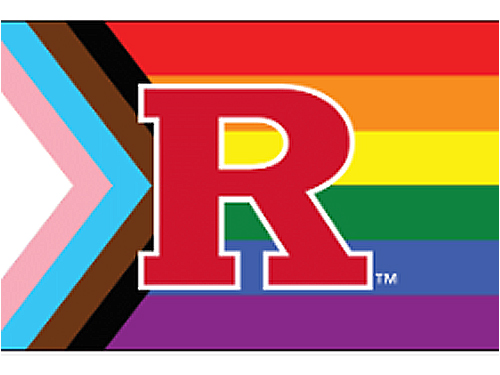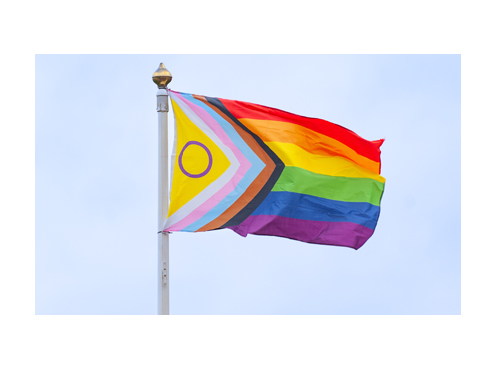
Fact Sheet FS1370
LGBTQIA2S+ individuals—those who identify as lesbian, gay, bisexual, transgender, queer/questioning, intersex, asexual, two-spirit, and other diverse gender and sexual identities—face unique disparities that impact their health, well-being, and engagement within their communities. The LGBTQIA2S+ community is diverse, encompassing individuals from various racial, ethnic, socioeconomic, and cultural backgrounds. For some, these challenges are further compounded by multiple layers of oppression, such as those faced by people from racial or ethnic minority groups or individuals with disabilities. However, all members of the LGBTQIA2S+ community are likely to experience discrimination and marginalization, which negatively affects their physical, mental, and social health.
To effectively support LGBTQIA2S+ individuals, it is essential for educators, community-based organizations, healthcare providers, and other stakeholders to be informed and actively engaged in reducing health disparities. Creating spaces that are inclusive, equitable, and supportive is critical. By fostering inclusive environments and addressing the systemic inequities that contribute to health disparities, we can ensure equitable participation and well-being for all individuals within the LGBTQIA2S+ community. This fact sheet offers an overview of how to understand and support LGBTQIA2S+ individuals in community engagement efforts.
Social Determinants of Health and Minority Stress
Social determinants of health (SDOH) are nonmedical factors that influence health outcomes. These factors encompass the conditions in which people are born, grow, work, live, worship, and age, as well as the broader social forces and systems that shape daily life. LGBTQIA2S+ individuals face a variety of challenges related to economic stability, education access and quality, healthcare access and quality, neighborhood and built environment, and social and community context. These challenges are often intensified by stigma and discrimination, which can contribute to negative health outcomes, including mental health issues, substance use, and chronic conditions. One key factor in these disparities is Minority stress—a chronic form of stress experienced by LGBTQIA2S+ individuals due to the stigma and exclusion they face. This stress plays a significant role in the mental health challenges that many LGBTQIA2S+ individuals experience.
Understanding the Social Determinants of Health Through an LGBTQIA2S+ Lens
LGBTQIA2S+ individuals navigate a world shaped by social, economic, and environmental conditions that deeply influence health and well-being. By examining the five key social determinants of health—economic stability, education access and quality, healthcare access and quality, neighborhood and built environment, and social and community context—we can better understand how systems of inequality and minority stress contribute to disparities, and how intentional, inclusive action can foster equity and resilience.
Economic Stability
LGBTQIA2S+ individuals, particularly transgender and gender-nonconforming people, face higher rates of unemployment and underemployment due to discrimination. This economic instability often leads to increased rates of poverty and homelessness within this population. For instance, CDC's Youth Risk Behavior Survey (YRBS) shows that transgender students face housing instability more than seven times higher than their cisgender peers, with many reporting living "on the streets" or in other public places when experiencing housing instability.
Education Access and Quality
Members of the LGBTQIA2S+ community often encounter bullying, harassment, and exclusionary policies in educational settings. These experiences can negatively impact academic achievement and access to higher education opportunities. The absence of inclusive curricula and affirming educational environments further compounds these challenges. Implementing LGBTQIA2S+-affirming policies and practices within schools and academic institutions has been linked to improved psychosocial and educational outcomes.
Healthcare Access and Quality
Barriers to healthcare access—including provider bias, lack of insurance, and limited availability of affirming care—are common for LGBTQIA2S+ individuals. Affirming care is inclusive, respectful, and responsive to the specific needs of LGBTQIA2S+ patients. These challenges contribute to disparities in both physical and mental health, as well as reduced access to preventive services. Building culturally responsive and inclusive healthcare systems is essential to address these disparities.
Neighborhood and Built Environment
LGBTQIA2S+ individuals may live in neighborhoods with limited access to safe recreational spaces, nutritious food, and public services, contributing to increased stress and negative health outcomes. Community-based organizations, including housing agencies, must be culturally responsive, reflecting on organizational policies and personal biases to provide inclusive services. LGBTQIA2S+-specific training on civil rights for organizations can improve adherence to anti-discrimination laws, ensuring equitable housing access. Prioritizing community safety through inclusive policies helps create environments where LGBTQIA2S+ individuals feel secure and supported.
Social and Community Context
Discrimination, stigma, and rejection from family or community can lead to social isolation and mental health challenges within the LGBTQIA2S+ population. On the other hand, strong social networks and community support are protective factors that improve health outcomes. Initiatives that foster inclusion and belonging—such as peer support groups, cultural centers, and affirming public spaces—can help strengthen these connections and promote resilience.
Addressing these social determinants of health is critical in reducing health disparities and promoting health equity for LGBTQIA2S+ youth. By focusing on these areas, public health initiatives can create more inclusive and supportive environments that empower LGBTQIA2S+ youth to thrive.
5 Key Principles for Supporting LGBTQIA2S+ Inclusion
Creating an inclusive and supportive environment for LGBTQIA2S+ individuals requires intentional efforts that honor their identities, experiences, and unique challenges. The following principles provide a framework for fostering inclusion and equity across all spaces—whether in healthcare, education, workplaces, or communities. These principles aim to reduce stigma, promote respect, and ensure that LGBTQIA2S+ individuals feel seen, valued, and safe. By embracing these principles, organizations and individuals can actively contribute to a more inclusive society that affirms the rights and dignity of LGBTQIA2S+ people.
1. Respect Identity
- Recognize the diversity of sexual orientations and gender identities, acknowledging that these identities exist on a spectrum.
- Use inclusive language and always refer to individuals using their preferred names and pronouns.
- Foster open dialogues on gender identity and sexual orientation, avoiding assumptions and encouraging self-expression.
- Avoid cisnormative or heteronormative language and practices. Cisnormativity is the assumption that everyone is cisgender, and this assumption can lead to exclusion or misunderstanding of non-cisgender individuals.
2. Create Safe Spaces
- Design both physical and digital environments where LGBTQIA2S+ individuals feel safe, supported, and respected. This includes providing gender-neutral restrooms and ensuring privacy in sensitive spaces.
- Implement a zero-tolerance policy for discrimination or harassment of any kind, particularly relating to gender identity, gender expression, or sexual orientation.
- Acknowledge and address heteroprofessionalism and cisnormativity. Recognize that workplace norms often reflect cisgender and heterosexual standards, labeling non-conforming identities as unprofessional. This bias can marginalize LGBTQIA2S+ individuals and hinder authentic self-expression. Educate staff on these concepts to foster a more inclusive environment.
3. Promote Education and Awareness
- Provide training for staff, volunteers, and stakeholders on LGBTQIA2S+ issues, including terminology, inclusion practices, and the impact of stigma and discrimination on health and well-being.
- Hold workshops and community presentations to increase awareness of LGBTQIA2S+ culture, health disparities, intersectionality, and the unique challenges faced by LGBTQIA2S+ individuals.
4. Foster Intersectionality
- Acknowledge that LGBTQIA2S+ individuals are not a homogenous group, and health and social challenges often intersect with other identities such as race, ethnicity, age, disability, and socio-economic status.
- Approach LGBTQIA2S+ inclusion through an intersectional lens, recognizing how multiple intersecting identities shape experiences and may compound health disparities.
5. Ensure Inclusive Paperwork and Policies
- Modify all forms, applications, and surveys to include non-binary and gender-neutral language, providing individuals with the option to self-identify their gender and sexual orientation.
- Ensure that health and community services ask for preferred pronouns and avoid relying on binary gender and sexuality options, creating more inclusive and affirming spaces for all.
Practicing Self-Reflection and Challenging Internal Biases
Self-reflection is a critical first step in recognizing and addressing biases, stereotypes, and privileges that can affect our interactions with LGBTQIA2S+ individuals. By engaging in self-awareness, we can identify areas for growth and actively work to create more inclusive environments. This section provides actionable tips for reflecting on implicit biases and challenging internal assumptions to promote equity and support LGBTQIA2S+ inclusion in meaningful ways. Tips for Self-Reflection:
Assess and Acknowledge Implicit Biases
- Reflect on your own attitudes and assumptions about LGBTQIA2S+ individuals and their intersecting identities.
- Take implicit bias tests (e.g., from Project Implicit) to uncover unconscious biases, and educate yourself through LGBTQIA2S+ competency trainings to challenge harmful assumptions.
Challenge Stereotypes and Avoid Generalizations
- Avoid making assumptions about sexual orientation, gender identity, or pronouns. Recognize the diversity within the LGBTQIA2S+ community, understanding that everyone's experience is unique.
- Refrain from labeling or stereotyping individuals based on one aspect of their identity, understanding that the LGBTQIA2S+ community is diverse, and people's experiences are shaped by intersecting factors.
Acknowledge Privilege and Promote Equity
- Reflect on how cisgender or heterosexual privilege may influence your interactions and decision-making.
- Use your position to amplify the voices and experiences of marginalized LGBTQIA2S+ individuals and promote equal representation in decision-making processes.
Resources for Continued Learning
The following resources provide valuable information and guidance for those looking to deepen their understanding and enhance their practices in supporting LGBTQIA2S+ individuals:
Supporting LGBTQIA2S+ people requires a multifaceted approach that acknowledges the diverse experiences within our shared communities and addresses the systemic barriers that affect health, education, and inclusion. Educators, healthcare providers, community organizations, and all individuals have a role to play in reducing disparities and advancing equity through ongoing self-reflection and the adoption of inclusive, affirming practices and policies. By fostering environments that respect and celebrate the full spectrum of identities, we help cultivate a sense of belonging and well-being for everyone. When we commit to these collective efforts, we move closer to a society where all people—of every sexual orientation, gender identity, gender expression, and intersecting identity—can live with dignity, thrive authentically, and realize their full potential.
References
June 2025
Copyright © 2025 Rutgers, The State University of New Jersey. All rights reserved.
For more information: njaes.rutgers.edu.
Cooperating Agencies: Rutgers, The State University of New Jersey, U.S. Department of Agriculture, and Boards of County Commissioners. Rutgers Cooperative Extension, a unit of the Rutgers New Jersey Agricultural Experiment Station, is an equal opportunity program provider and employer.



